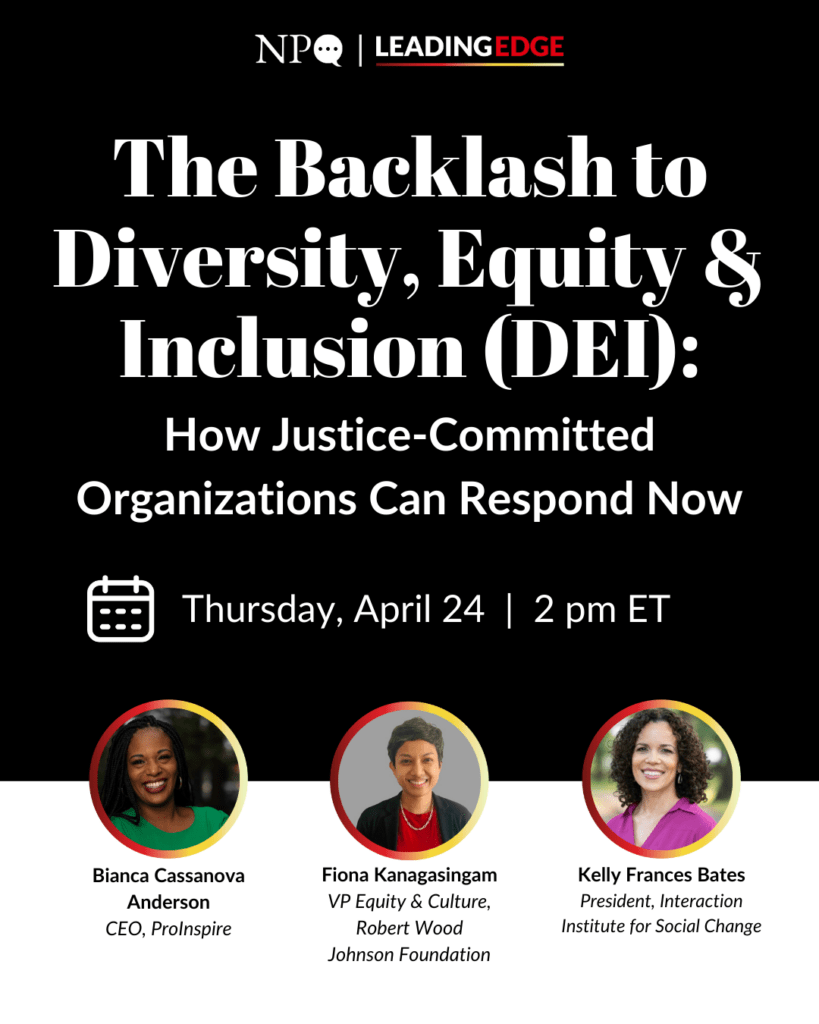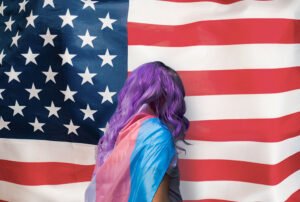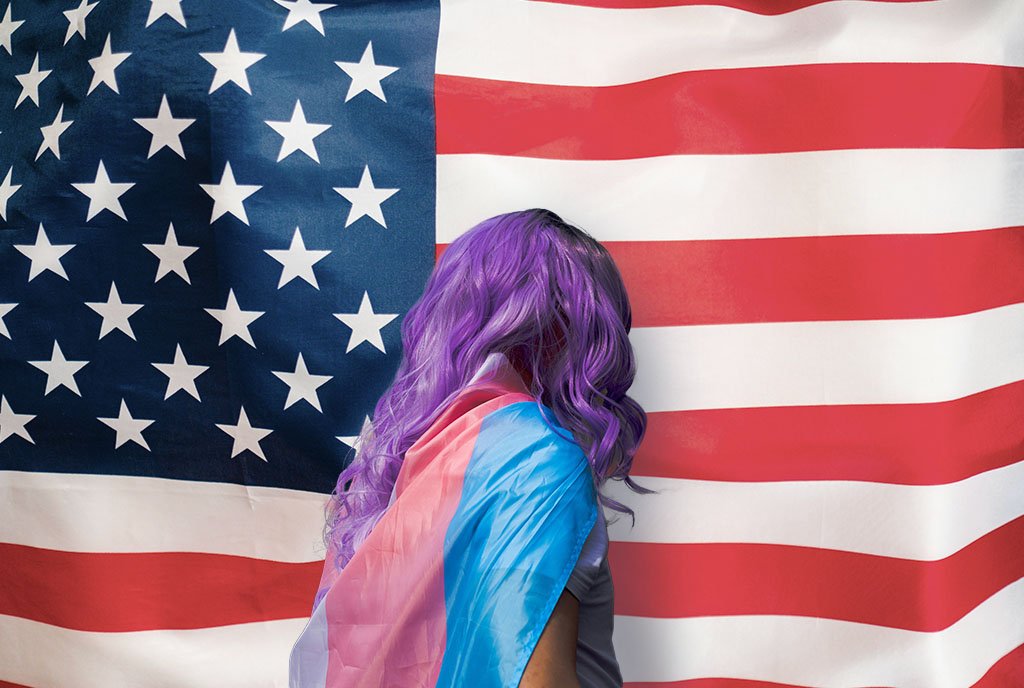
The Trump administration began fulfilling a key campaign promise immediately after taking power: the dismantling of diversity, equity, and inclusion (DEI) initiatives in the federal government and beyond. This action, taken largely through a slew of executive orders, have left nonprofit leaders confused about their options. And the language used in these executive orders raises concerns about legal risks for nonprofit organizations.
While DEI consultants and officers may hesitate to give specific advice for navigating the uncertainty, attorney and political strategist Jill Habig has a lot to say on the matter.
Habig is the founder and CEO of Public Rights Project (PRP). She has deep expertise in affirmative litigation, policy advocacy, and public law and previously served as special counsel to then-California Attorney General Kamala Harris, focusing on civil rights, consumer fraud, and education issues.
In a recent conversation with NPQ, Habig shed light on the potential legal challenges related to DEI and provided concrete steps for leaders who want to protect their organizations and workforce, while upholding their mission.
The key takeaway: The law remains firmly on the side of anti-discrimination efforts.
This interview has been edited for clarity and length.
Jennifer Johnson: Many organizations and companies are uncertain about how recent executive orders and memoranda targeting DEI may impact their work. From a legal perspective, what is the most urgent threat they should be aware of, and how much of this is a legitimate legal risk versus political intimidation?
Jill Habig: First, I want to say that I can’t give any individual nonprofit or company legal advice. But in this volatile moment, it’s really important for organizations to seek their own counsel. There are a number of pro bono law firms that provide legal advice to nonprofits, and groups like We the Action can connect them to pro bono legal advice. If an organization doesn’t already have outside counsel or legal support, I would encourage them to seek it out.
But I think the biggest challenge right now is the merging of political bluster and bullying in the form of legal threats, even though many of those threats are unlawful. These executive orders are an attempt to rewrite the Constitution and rewrite federal law. But that’s not how the system works. I think it’s really important to remember that anything that was lawful on January 19 is still lawful. The law has not changed—on anti-discrimination protections, DEI, or any related policies. What this administration is attempting to do is create an upside-down world where preventing discrimination is now framed as discrimination itself.
“This administration is trying to force organizations to choose between their mission and their legal liability.”
It’s really dangerous to take these executive orders at face value. The goal is to use the threat of legal action to pressure companies and organizations to abandon lawful efforts aimed at making sure everyone is treated fairly in the workplace. This allows them to achieve their goals without ever changing the law or having to defend their actions in court.
The vast majority of DEI programs across the country, including our own at Public Rights Project, are well within the bounds of the law. In fact, these programs are designed to prevent discrimination and promote fairness in the workplace and in programmatic efforts.
JJ: State and local governments have their own agencies focused on equal opportunity and human rights. How can organizations tap into these resources to protect their DEI programs and employee rights?
JH: Every state has a state-level version of the EEOC [Equal Employment Opportunity Commission], and many local governments have human rights commissions and similar agencies aimed at preventing and addressing discrimination.
Even as the federal government is trying to upend civil rights law and reframe anti-discrimination efforts as discrimination against White people, states and cities are continuing—and in some cases, even bolstering—their efforts to prevent discrimination in the workplace. Remember, companies and nonprofits are still bound by state law and local laws that aim to prevent and address discrimination.
State-level EEOC websites may [have] different names. For example, California has the California Civil Rights Department (CRD), which was formerly called the Department of Fair Employment and Housing. These websites, along with local human rights commissions, can provide Know Your Rights guides and other resources for employers.
JJ: How are state and local governments pushing back against federal challenges to DEI?
JH: One of the ways that states and cities are stepping up is by taking the federal government to court right away. This takes some of the burden off of individual companies and nonprofits.
A major way we support them at PRP, along with other organizations, is through litigation to challenge these illegal executive orders. Taking these cases to court puts it on the record that a huge number of companies and organizations are perfectly within the bounds of the law and that the federal government can’t just coerce companies and nonprofits into changing their behavior.
“Anything that was lawful on January 19 is still lawful.”
One lawsuit challenging those anti-DEI orders has already been filed by Democracy Forward, the City of Baltimore, restaurant workers, and a number of university diversity officers and other university employees across the country. The lawsuit argues that the orders violate the First Amendment because they discriminate against speech in favor of racial equity, gender equity, or disability rights.
Sign up for our free newsletters
Subscribe to NPQ's newsletters to have our top stories delivered directly to your inbox.
By signing up, you agree to our privacy policy and terms of use, and to receive messages from NPQ and our partners.
These executive orders also violate the separation of powers by imposing new funding rules that Congress never authorized. And they are extremely vague. None of them clearly define terms like equity or DEI or specify which DEI policies and programs run afoul of these new standards. This is a violation of due process—and one of the fundamental principles of due process is people need to be able to understand what is or isn’t within the bounds of the law.
JJ: What should organizations be doing right now to protect their DEI efforts while minimizing legal risk and upholding their mission without making themselves vulnerable?
JH: This administration is trying to force organizations to choose between their mission and their legal liability. But it’s important to remember that these orders have not actually changed the law. So, either with inside or outside counsel, what organizations should be doing is reviewing their existing policies to see if there are areas where they might be more vulnerable under the current law and make targeted changes to any policies that might present more risk.
Now is a good time to seek legal support in case they are targeted. At PRP, we keep in mind that nothing in these orders directly applies to us or requires us to change any practices that have already been vetted. These practices are there to help our employees thrive and make sure we’re treating everyone fairly.
JJ: Other than reviewing their policies and seeking legal counsel, how else can organizations prepare for potential investigations or legal challenges?
JH: One important consideration for funders and larger organizations and companies is whether to proactively pursue affirmative litigation or prepare to defend their lawful DEI policies.
This is a time when there is strength in numbers—funders, organizations, and companies can band together and defend their lawful policies. This may not be the right decision for every organization. Some are facing greater risks than others, and smaller organizations may need to just focus on continuing to provide direct services to their community.
But for those who have the resources, this might be the time to consider being ready to defend their policies or even proactively participate in some of the litigation challenging these illegal orders.
Any organization facing the loss of federal funding or that’s being targeted by administrative action might have legal claims, and proactive litigation is a way to vindicate or advance their rights.
JJ: For organizations considering legal action, what key factors should leaders evaluate before getting involved in a lawsuit?
JH: It depends on the organization’s mission, resources, and the extent to which it may be threatened by these orders and other federal government actions.
At PRP, one thing we consider is how to adjust our risk tolerance in a climate where the federal government is trying to intimidate local governments and organizations.
“[The Trump administration] can’t rewrite federal law to make legal programs illegal.”
As a litigation organization, we’re used to participating in lawsuits. But we’re not just asking, Can we win this case? We’re asking if it’s a worthy fight that aligns with our mission and whether it can slow or mitigate some of the harm caused by this administration.
JJ: What is the broader impact when companies and nonprofits stand together in defense of DEI, and how does that compare to collective action at the state and local levels?
JH: I think folks are looking around to see what their peers are doing in this climate. When they see peer organizations, local government, and companies continuing to stand up for their values, for equity, and for a society where everyone can thrive—regardless of race, gender, or other identities—it inspires them to fight for equal rights.
Different organizations will make different decisions, but it’s worth considering where there are opportunities to work in coalition with peers and partners in their region or sector.
The current lawsuit I referenced is an interesting example of this kind of collective action. It’s people from different sectors banding together to say, This is not in line with our values, and it’s not in line with the law, so we will stand up and challenge these actions.
JJ: Any final advice for organizations trying to navigate this uncertain moment?
JH: It’s important to stay grounded in your mission, your values, and the work you’re doing. Remember, the point of this strategy is to overwhelm us and make us think we have to make changes to avoid federal scrutiny. But the reality is that there are millions of nonprofits and companies across the country, and the Trump administration can’t target them all. And they can’t rewrite federal law to make legal programs illegal without congressional action or a constitutional amendment.
Even though it feels overwhelming, this effort is about getting people to comply in advance, so the administration doesn’t have to defend these actions in court. Everyone should remember that.












